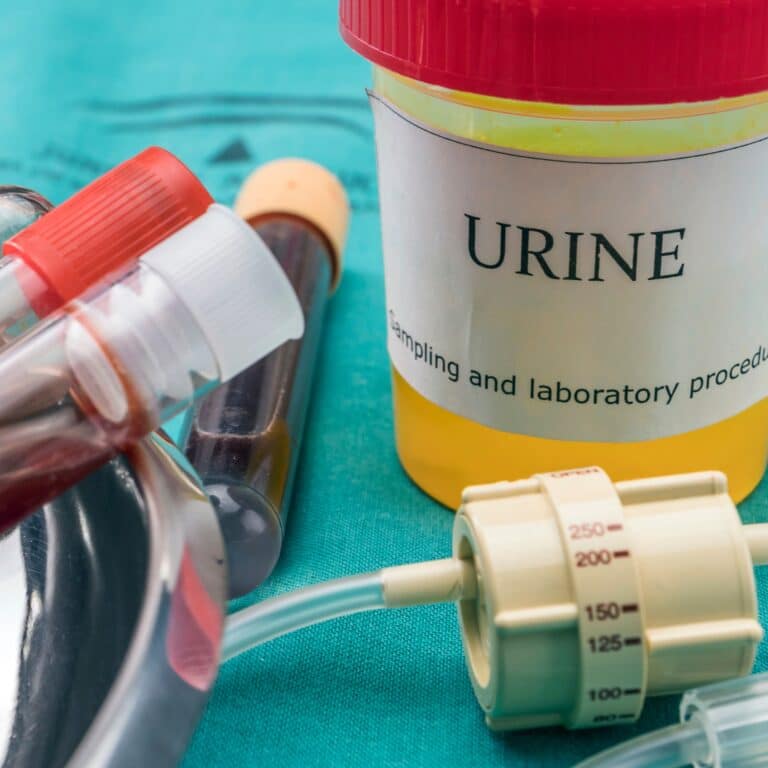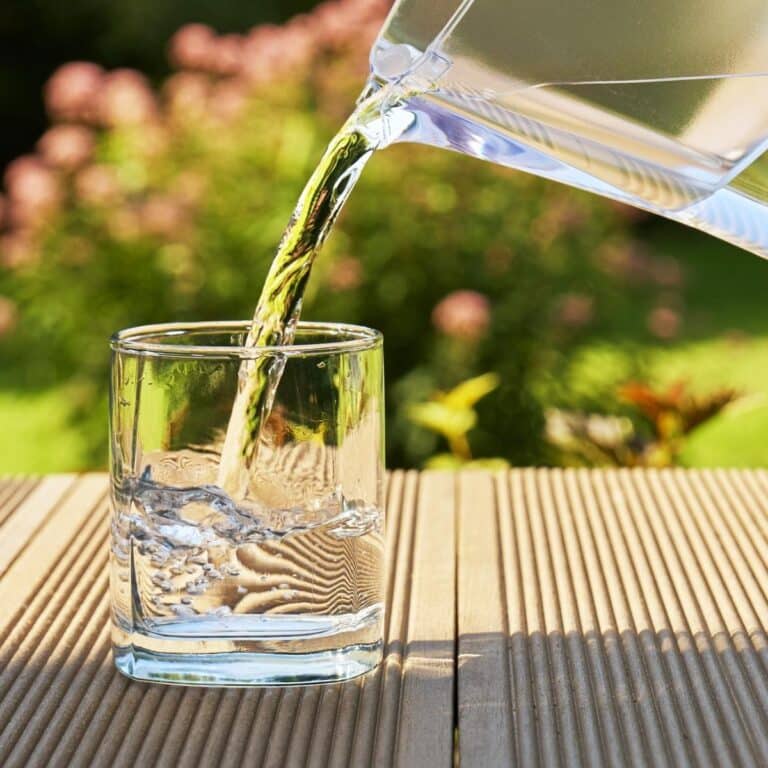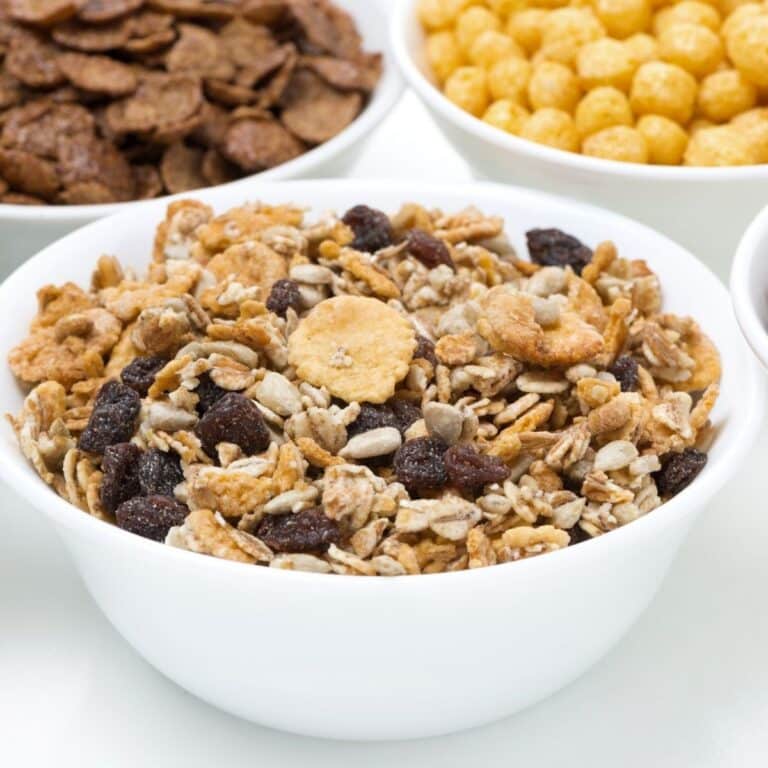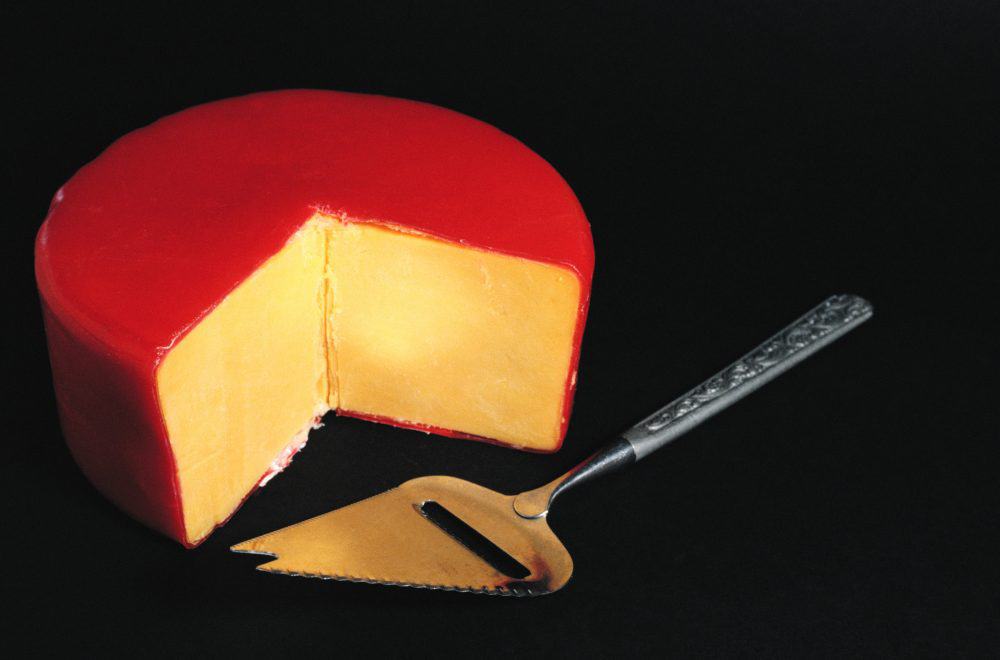Kidney Friendly Candy
With chronic kidney disease (CKD), you need to watch out for excess sodium first and foremost. You should also be careful about your sugar intake, since kidney disease may be accompanied by diabetes as well.
But it seems like every time you turn around there is another sweet holiday, which usually amounts to just another excuse to eat extra treats. Candy is a beloved treat enjoyed by many, young and old alike. However, those with kidney problems know that the sugary snacks can be off limits due to their high sugar content.
But what if we told you there was a way to indulge in candy while still being mindful of your health? Well, now it's possible thanks to sweeteners, making them perfect for anyone looking for an indulgence that won't aggravate their kidneys. Let's take a look at some of these delectable options so you can enjoy candy again, hassle free!
Jump to:
- What Makes Candy Kidney-Friendly?
- Dark Chocolate
- Tips For Choosing Kidney Friendly Candy
- Sodium Content
- Potassium Content
- Phosphorus Content
- Kidney-friendly Candy Ideas
- Berries and Cream
- Baked Treats
- Cherry Cobbler
- Rice Crispy Treats
- Sugar-free Candies
- Tips For Enjoying Kidney-Friendly Candy
- Managing Portions
- Reading Labels
- Common Questions About Kidney Friendly Candy
- Enjoy Kidney-Friendly Candy With Your Diet
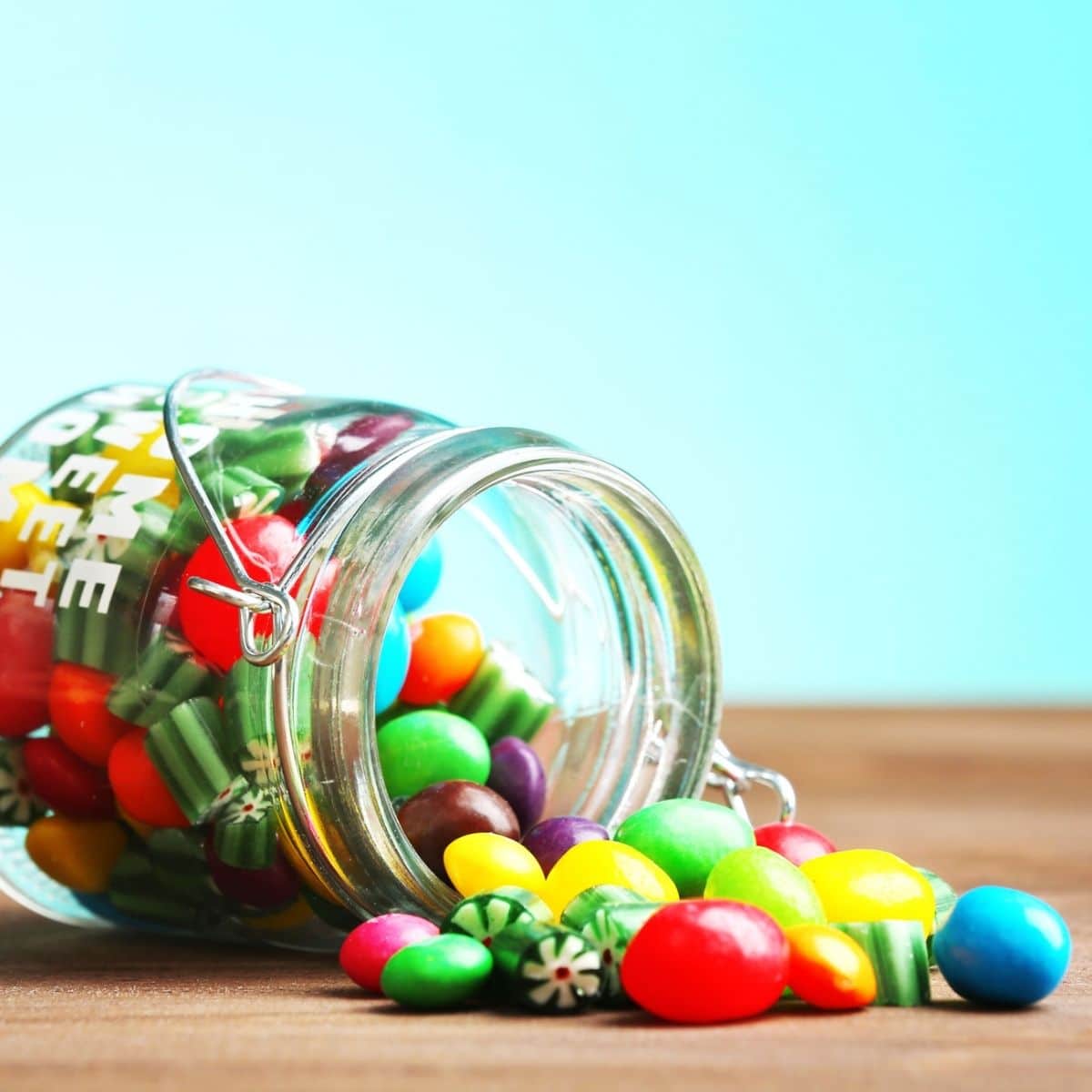
What Makes Candy Kidney-Friendly?
With chronic kidney disease, you need to watch out for excess sodium first and foremost. Since metabolic diseases like renal disease are usually accompanied by other chronic illnesses such as diabetes and hypertension, you should also be careful about your sugar intake. Also be sure to be cognizant of preservatives, potassium, phosphorus, and hidden chemical additives.
Here are some great examples of candy that’s suited for a renal diet!
For More Recipes and Ideas --->> Get Your Free Meals and Recipes That Are Perfect for Pre-Dialysis Diets, Pre-Dialysis with Diabetes, or Dialysis Diets.
Dark Chocolate
Dark chocolate can be a better option than other types of candy for people with kidney disease because it is generally lower in sugar and higher in antioxidants than other types of candy.
Dark chocolate contains flavanols, which are antioxidants that may help improve blood flow and lower blood pressure, reducing the risk of heart disease. Additionally, dark chocolate is lower in sugar than many other types of candy, which can be beneficial for people with kidney disease who need to limit their sugar intake.
However, it's important to note that dark chocolate is also a source of potassium, which can be a concern for people with kidney disease. It's important to limit your intake of dark chocolate and other high-potassium foods and talk to your doctor or a registered dietitian about how much is safe for you to consume.
Tips For Choosing Kidney Friendly Candy
When it comes to choosing kidney-friendly candy, there are a few things to keep in mind. First, it's important to consider the sodium, potassium and phosphorus content of the candy, as kidney patients may need to limit their intake of these minerals.
It's also important to pay attention to added sugars and to keep your diabetes under control, as high blood sugar from uncontrolled diabetes can cause damage to your kidney. Finally, it's a good idea to check with a healthcare professional or renal dietitian to determine what types and amounts of candy are appropriate for an individual's specific dietary needs.
Sodium Content
It's so easy to reach for a sweet treat when cravings take over. But, if you're someone with kidney disease, it can be difficult to find something that not only satisfies those cravings but is also safe and healthy.
When it comes to choosing candy for kidney patients, it's important to read the nutrition labels carefully and look for candies that are low in sodium. Hard candies and gummy candies may be lower in sodium, but it's important to check the labels to be sure.
These options may still contain sugar, but they are generally healthier than candy with added sodium. Candies with added salt, such as salted caramels or salted chocolate, should be avoided. More examples of high sodium candies to avoid include:
- Black licorice: Black licorice often contains a significant amount of sodium, so it's best to avoid it if you're on a low-sodium diet.
- Caramel candies: Caramel candies can be high in sodium due to added salt.
- Saltwater taffy: As the name suggests, saltwater taffy contains salt, making it a high-sodium candy option.
It's also important to keep in mind that even low sodium candies should be consumed in moderation as part of a balanced diet
By following these simple steps, one can enjoy their favorite candies without having to worry about any adverse effects due to sodium levels - allowing them to focus on leading a healthier lifestyle overall!
Potassium Content
Another key mineral to consider when looking for kidney-friendly candy is potassium. It's important to regulate your potassium intake while living with chronic kidney disease, as a buildup of potassium may increase your risk of having a potential heart attack or irregular heartbeat.
High-potassium candy should be avoided by kidney patients. Some examples of high-potassium candies include:
- Milk or dark chocolate candies
- Candy with peanut butter (e.g., Reese’s® Peanut Butter Cups)
- Candy with nuts (e.g., PayDay® candy bar)
Phosphorus Content
When it comes to managing a healthy renal diet, high phosphorus foods should also be limited. Fruit-based candies, like gummy bears or fruit chews, are generally lower in phosphorus than chocolate or nut-based candies and are kidney-friendly. However, it's still important to consume them in moderation, as they can be high in sugar and calories.
Portion control is important - by monitoring how much you eat and drink, you can get the most out of your snacks without compromising on health. Ultimately, learning how to choose treats wisely requires knowledge and practice but once mastered, anyone can enjoy an occasional indulgence that's both tasty and safe!
Kidney-friendly Candy Ideas
Low-potassium candies are great for those with kidney problems, as they have a low amount of potassium. Sugar-free candy is a great option for those who want to stay away from sugar-loaded treats.
For those who can't resist sweets, there are plenty of kidney-friendly candy recipes that use natural sweeteners instead of sugar. Or even sugar free jello with applesauce for a yummy treat!. These recipes are a healthier way to indulge in a sweet treat. Let's talk about some of the ways to make delicious, kidney-friendly candies.

Berries and Cream
Considering how sweet they are, berries may actually help improve your blood sugar. They also are packed full of good stuff like vitamins and antioxidants. Perhaps most importantly, they taste amazing. Especially when topped with a generous dollop of sugar-free whipped topping.
Baked Treats
You can bake your own healthier versions of brownies, cookies, and cakes. Simply make substitutions where necessary to cut down on the sugar and other ingredients that you need to be vigilant about. You can use Splenda instead of sugar. Often, you can even cut the amount of sweetener you use in half and replace some of it with unsweetened applesauce.
Cherry Cobbler
You can make a simple no-sugar-added version of cherry cobbler without much effort at all. Simply pit and halve cherries and place them in a casserole or baking dish. Make a crumble by cutting a couple tablespoons of cold butter into oats and flour. Sprinkle it over the top and bake at 350 degrees until the topping is golden brown and the cherries are hot and juicy. This goes great with a scoop of low sugar vanilla ice cream.
Rice Crispy Treats
Rice crispy treats are a great option for people with kidney disease because they do not have much in them that could hurt you. Do be aware of the sugar if you are also diabetic, and remember to eat them in moderation of course.
Sugar-free Candies
Sugar-free candies are always an option and are often recommended for kidney disease patients that are having trouble with fluid restrictions.
You can easily create your own sugar free candy as there are so many sugar alternatives and artificial sweeteners out there that can make for delicious treats, plus you also have plenty of healthy ingredients available to use as well. Whether it's using stevia instead of sugar or adding agave nectar to enhance flavor options, making your own kidney-friendly candy recipes at home gives you the opportunity to cater specifically to your dietary needs.
You can also find sugar free versions of just about every hard candy you can imagine.
Kidney disease does not mean that you cannot enjoy a treat now and then. The key, as always, is moderation and finding the right substitutions for foods that are no longer safe for you to eat. Discuss this list of treats with your healthcare provider to be sure you are choosing the best foods for your kidney safe diet.
Tips For Enjoying Kidney-Friendly Candy
When it comes to kidney-friendly candy, there are plenty of options out there. It's important to be mindful of portion sizes, as many of these treats are still high in sugar. Reading labels is also key - if sodium is listed as one of the ingredients, it's best to avoid. With a little bit of research, you can find delicious treats that are also suitable for those with kidney problems.

Managing Portions
Now that you know how to create your own kidney-friendly candy, it's important to make sure you're managing portions properly. Portion control is key when enjoying any type of food in moderation - and this includes sweet treats!
Although some candies may be sugar-free, they still don’t provide you with the essential nutrients that you can only get by following a balanced meal plan. A well-balanced meal typically includes a mix of carbohydrates, proteins, and healthy fats, as well as essential vitamins and minerals.This ensures that you're getting the right nutrients in the right proportions to support your overall health.
To help maintain a healthy balance between indulgence and nutrition, try implementing some moderation techniques such as creating smaller snack ideas instead of larger ones. You can also pre-portion the candies into small bags or containers to help control the amount you consume. With these tips in mind, you'll be able to enjoy the occasional treat without going overboard on your sugar intake.
Reading Labels
Now that you know how to create your own kidney-friendly candy, it's important to understand how to read food labels for maximum nutrition and safety. Reading the nutrition facts on any product can help you determine which ingredients are more suitable for a renal diet, as well as if there are any sugar substitutes or other additives used instead of traditional sweeteners.
Natural sugar alternatives such as stevia and monk fruit extract may be less likely to cause an unhealthy spike in blood sugar levels than artificial ingredients like sucralose or saccharin. Not only are these options better for blood sugar control than regular treats, but they can also come with added health benefits such as improved digestion or reduced tooth decay!
It's also wise to look out for allergen warnings, so that those with allergies can avoid particular foods they may be sensitive to. Taking the time to scan through ingredient lists can help ensure that what you're consuming is safe - both in terms of its effects on your health and taste! With these tips in mind, you'll have no problems enjoying delicious kidney-friendly treats while still remaining mindful of your dietary restrictions.
Common Questions About Kidney Friendly Candy
Let's start with high sugar content; when it comes to healthy kidney-friendly candy, it's important to avoid anything that has a lot of sugar. Similarly, artificial colors and flavors can be problematic, so it's best to stay away from those. Lastly, it's best to avoid candy with a lot of added preservatives; they can be harmful to the kidneys.
High Sugar Content
When it comes to eating kidney-friendly candy, minimizing your intake of sugars is key. High sugar intake from candies can lead to a rapid rise in blood sugar, which can damage the tiny filtering units present within each kidney. Instead of sugar, opt for candy with sugar substitutes like sucralose or stevia which provide the same sweet taste without exceeding daily sugar limits.
If you're making your own candy and are looking for something extra special, try adding some low-sodium fruits like oranges or berries for an added boost of sweetness - no guilt necessary! Ultimately, when making decisions about what type of sweets to enjoy, be mindful that moderation and high quality ingredients are essential for keeping your kidneys healthy.
Artificial Colors/Flavors
No matter how much you might want to indulge in sugary sweets, it's important to remember that artificial colors and flavors are also something to be mindful of when eating kidney-friendly candy.
It is important to avoid artificial colors and flavors in kidney-friendly candy for the following reasons:
. Potential health risks: Artificial colors and flavors have been associated with various health concerns, including allergies, hyperactivity in children, and other adverse effects on overall health. For individuals with kidney disease, it is important to minimize exposure to unnecessary additives.
. Overall dietary considerations: Individuals with kidney disease often need to follow a restricted diet that limits certain nutrients, such as phosphorus and potassium. Food additives may contain additives that are high in potassium and phosphorus, which can be harmful to kidney health.
This is why label reading is so important - always check the ingredients list for added artificial colors or flavors!
While kidney-friendly candies are generally safe for people with kidney disease, they can still have potential side effects, especially when consumed in excess. Here are some potential side effects:
1. Increased Blood Sugar Levels: Many candies, even those that are kidney-friendly, contain high amounts of sugar. This can lead to increased blood sugar levels, which can be particularly problematic for individuals with diabetes.
2. Weight Gain: Candies are often high in calories and can contribute to weight gain if consumed in large amounts. This can lead to other health problems, such as heart disease and high blood pressure.
3. Tooth Decay: The sugar in candy can contribute to tooth decay, especially if oral hygiene is not maintained.
4. Excess Phosphorus and Potassium: While kidney-friendly candies are typically low in phosphorus and potassium, consuming them in large amounts could still lead to an excess of these minerals in the body. This can be harmful for individuals with kidney disease, as their kidneys may not be able to effectively remove these minerals from the blood.
There are no specific storage requirements for kidney-friendly candy that differ from regular candy storage. However, it's essential to follow general storage guidelines to maintain the quality and freshness of the candy. Here are some general storage tips:
1. Store candy in a cool, dry place: Keep candy away from direct sunlight, heat, and humidity. Ideal storage temperature is around 70°F (21°C).
2. Use airtight containers: To prevent exposure to air and moisture, store candy in airtight containers or resealable plastic bags.
3. Keep candy away from strong odors: Some candies can absorb odors from their surroundings, so store them away from items with strong smells.
4. Separate different types of candy: Store different types of candy separately to prevent flavors from mixing.
5. Check expiration dates: Always check the expiration dates on candy packaging and consume them within the recommended time frame.
Remember that kidney-friendly candies are typically low in phosphorus, potassium, and sodium. Consult with your dietitian or healthcare provider for specific recommendations on which candies are suitable for your kidney-friendly diet.
Sweet cravings can be hard to satisfy, especially when you are trying to find a kidney-friendly option. But don't worry, alternative sweeteners and sugar substitutes like sucralose and stevia are here to the rescue!
They provide flavor enhancers without the high sugar content that could cause harm to your kidneys. A variety of these alternatives can be used in candy recipes specifically crafted for those with kidney disease, offering an indulgent treat while keeping them safe from potential health risks.
Sugar-free kidney-friendly candy, which often contains sugar substitutes like sucralose, stevia, and monk fruit extract can be a safer option for people with diabetes compared to regular candy.
Sucralose is one of the most well known sugar substitutes. Sucralose can help you maintain a more stable blood sugar level, making it a good alternative for people with diabetes. Additionally, sucralose is calorie-free and unlike sugar, sucralose doesn’t contribute to tooth decay.
However, it is essential to consume sucralose and other sugar substitutes in moderation. Overconsumption of sugar substitutes can cause gastrointestinal side effects such as bloating, gas, and diarrhea. It's also important to remember that other ingredients in foods containing sugar substitutes can still affect blood sugar levels.
When choosing kidney-friendly candy or any sugar-free products, it's crucial to read the nutrition facts label to understand the carbohydrate content and how it may affect blood sugar levels. As with any food, moderation and portion control are key for people with diabetes.
In summary, kidney-friendly candy containing sucralose or other sugar substitutes can be a safer option for people with diabetes when consumed in moderation. However, it's essential to monitor intake and maintain a balanced diet to ensure that you get all the nutrients that your body needs.
Enjoy Kidney-Friendly Candy With Your Diet
In conclusion, kidney-friendly candy is a great way to enjoy sweet treats without putting extra strain on your kidneys. It's important to be aware of the potential side effects associated with eating these kinds of snacks and make sure you follow any special storage requirements. Additionally, it's wise to check if the candy contains artificial colors or flavors and what type of sweetener has been used before enjoying it.
While kidney-friendly candy may not be suitable for everyone - particularly those with diabetes - it can still be an enjoyable treat for many people, as long as they do their research beforehand. As one would say: when life gives you lemons, find some kidney-friendly lemon drops!





